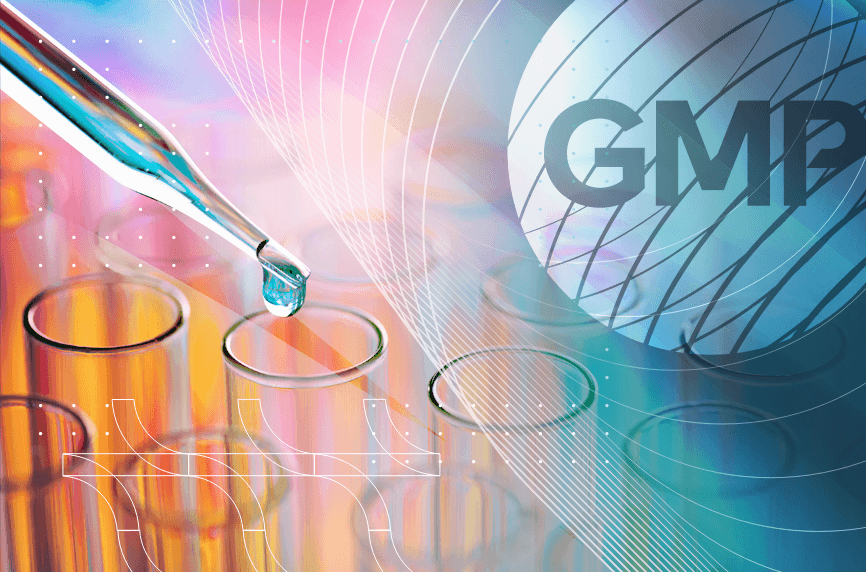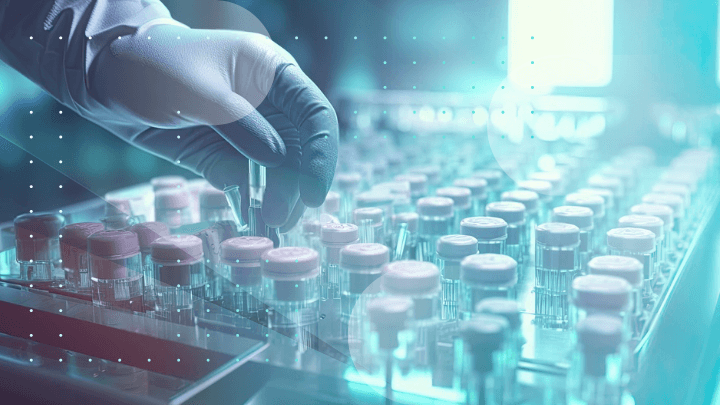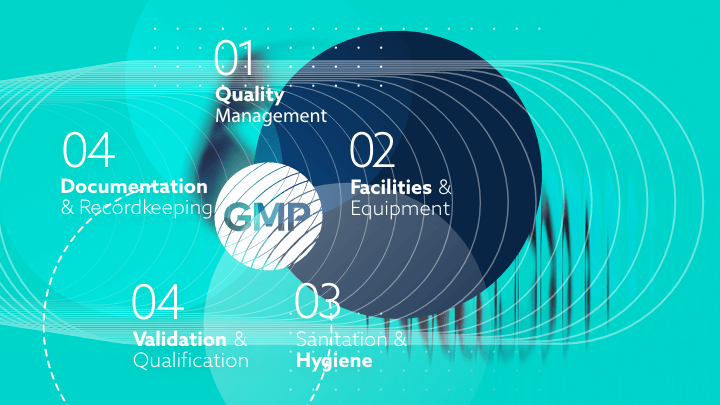Picture this: A new wonder drug hits the market, it promises to change lives. But a few months later, patients started reporting strange side effects—turns out, a contamination issue at the factory went unnoticed.
Or imagine a cutting-edge medical device that suddenly malfunctions during surgery because of a tiny production flaw.
These aren’t just worst-case scenarios; they happen when Good Manufacturing Practices (GMP) aren’t followed.
Ignoring GMP isn’t just risky; it can bring down entire companies. A single lapse can lead to a massive recall or a lawsuit that drains millions. Some businesses never recover from the damage.
So how does GMP keep healthcare manufacturers in check? And what happens when they get it wrong? Let’s break it down.
What is GMP: meaning and purposes
GMP (Good Manufacturing Practice) is a set of guidelines that ensure the quality, safety, and consistency of pharmaceutical and food products. It covers production, testing, and compliance with regulations.
Every industry has its quality standards, but in healthcare, mistakes can be catastrophic. A faulty car part might cause frustration. A faulty heart valve? That’s a matter of life and death. Enter GMP—the set of detailed guidelines ensuring consistently produced and safe healthcare products.
GMP regulatory compliance helps pharmaceutical companies adhere to specific GMP requirements, which ensures that everything from raw materials to finished products is under strict control. The result? A product that’s safe and intended for its use without any surprises.
When organizations comply with GMP standards, it’s more than just following regulations. It’s about creating trust. Healthcare providers and patients can rest easy knowing that the product in their hands meets quality control expectations. With GMP compliance training, staff know the procedures that keep products safe, while GMP audits ensure these practices are followed every step of the way.
Regulatory authorities, like the European Medicines Agency (EMA) and the U.S. Food and Drug Administration (FDA), enforce GMP compliance to ensure drug manufacturers meet the most stringent standards. The consequences of non-compliance can be severe, ranging from fines to complete market bans, and in extreme cases, jail time.
How GMP works in the real world
Picture this: you walk into a pharmaceutical manufacturing plant. It looks more like a sterile lab than a bustling factory floor. Workers in protective gear carefully follow procedures, ensuring that each step in the manufacturing process meets GMP standards. Every part of the process, from sourcing starting materials to packaging the finished product, is documented, no matter if it’s the production of biological medicinal products or the creation of a new drug,
GMP ensures that all aspects of the manufacturing processes are documented and consistent.
For example, slight temperature shifts during storage could render a biological product useless, or even dangerous. GMP compliance services offer regular inspections to ensure necessary controls are in place to prevent contamination. When companies adhere to current good manufacturing practices, they essentially make sure each product works as intended for human use.
This isn’t limited to drugs. The same level of scrutiny applies to medical devices, where GMP guidelines help ensure every component, from surgical instruments to implants, is crafted and tested with precision. That’s why GMP inspections are an ongoing process, not a one-time event.
In the world of health tech, GMP compliance software and rigorous testing guarantee that software products function as expected. That ranges from an app used in clinical trial authorisation to a system for tracking medical devices. GMP training for developers makes sure that every release is validated and secure.
Key principles of GMP
Every step in Good Manufacturing Practice is grounded in a few core principles that ensure consistent, high-quality products. These principles are designed to prevent any errors during production and ensure the product reaches the market in perfect condition. Each principle plays a crucial role in maintaining the integrity of the manufacturing process.
One of the most fundamental principles is quality control. From the very beginning, manufacturers must implement necessary controls to ensure that active ingredients meet strict standards. These ingredients must be tested at multiple stages of production, from the arrival of starting materials to the final testing of the finished product.
Another key principle is traceability. Every action taken during the manufacturing process must be documented, ensuring that a product’s journey from raw material to finished goods can be traced at any time. If a problem arises, this documentation allows companies to pinpoint the cause quickly, preventing widespread contamination or failure.
GMP compliance software plays a vital role in this principle, streamlining the documentation process and making sure that every batch is traceable. Regulatory authorities, such as rely on these records to confirm that each product adheres to the rigorous standards outlined in current good manufacturing practices. Manufacturers must always be ready for GMP inspections from the FDA or the EMA.
In addition to quality control and traceability, a third critical principle is personnel training. GMP compliance training ensures that everyone, from workers on the production line to senior management, is equipped with the knowledge needed to follow proper procedures.
Manufacturers need sufficient personnel to carry out each task, ensuring no one is overburdened. Proper training helps staff recognize potential issues before they escalate into problems that could affect the quality of the finished product.
Good Manufacturing Practices are not just about meeting regulatory expectations—they are about creating a culture of safety and quality. Companies that prioritize GMP compliance and implement these principles earn trust from regulators and patients alike.
Regulatory Bodies and Guidelines
Various regulatory authorities across the globe enforce guidelines and regulations. These bodies ensure that manufacturers follow the strict protocols set to safeguard consumers.
Some of the most recognized are the mentioned FDA and EMA, in addition to national competent authorities in each country. These organizations guide manufacturers on how to maintain consistent quality while ensuring safety and efficacy throughout the production process. Their guidelines are not just recommendations—they are legal requirements that must be followed to obtain marketing authorization for products like drugs, medical devices, and even healthtech software.
In the world of GMP, regulations aren’t one-size-fits-all. Depending on what a company produces—be it pharmaceutical products or biological products—different GMP compliance requirements may apply.
While the principles behind these regulations remain similar, there are specific GMP requirements for each industry. Medical device manufacturers must follow different production and testing standards compared to pharmaceutical manufacturers.
Likewise, healthtech software companies must demonstrate that their software meets specific standards for clinical trial authorization and its role in patient safety.
Overview of GMP guidelines
Regulators use several validation practices and guidelines. These healthcare standards define the requirements for manufacturers. They include quality management systems, proper manufacturing processes, and strong quality control measures.
The manufacturer’s compliance with these guidelines is essential to meeting regulatory requirements and ensuring patient safety.
ICH Q7 (International Council for Harmonisation of Technical Requirements for Pharmaceuticals for Human Use, Guideline Q7)
ICH Q7 is a globally recognized GMP guideline that provides guidance on good manufacturing practices for Active Pharmaceutical Ingredients (APIs).
It outlines the expectations for the quality management system, personnel, buildings, equipment, documentation, production, and quality control of APIs.
ICH Q7 aims to ensure that APIs are produced consistently and meet the required quality standards.
ISO 13485 (International Organization for Standardization, Standard 13485: Medical devices — Quality management systems — Requirements for regulatory purposes)
ISO 13485 is a standard specific to the medical device industry. It establishes the requirements for a quality management system for the design, development, production, and distribution of medical devices.
ISO 13485 places emphasis on risk management, product realization, and regulatory compliance. Compliance with this standard is often a prerequisite for obtaining regulatory approvals for medical devices in many countries.
GDPR (General Data Protection Regulation)
GDPR is a comprehensive data protection law that was enacted by the European Union (EU) in 2018. It replaced the previous Data Protection Directive and is designed to enhance individuals’ rights and privacy when it comes to their personal data.
The GDPR applies to organizations that process the personal data of individuals located in the EU, regardless of where the organization itself is based. EU GMP regulations set out various principles and requirements that organizations must comply with when collecting, storing, and processing personal data.
Non-compliance with the GDPR can result in significant fines and penalties. The maximum fines can be up to €20 million or 4% of the organization’s global annual revenue, whichever is higher. (1)
PIC/S (Pharmaceutical Inspection Co-operation Scheme)
PIC/S is an international organization that provides guidelines and standards for GMP in the pharmaceutical industry. Its GMP guidelines cover various aspects of pharmaceutical manufacturing, including quality management systems, documentation, premises and equipment, production, quality control, and self-inspection.
PIC/S aims to promote the harmonization of GMP standards globally and facilitate the mutual recognition of GMP inspections among its member countries.
FDA’s CFR Title 21 (Code of Federal Regulations Title 21)
The FDA’s CFR Title 21 encompasses various regulations related to food and drugs in the United States. Part 210 and Part 211 specifically outline the cGMP requirements for pharmaceutical manufacturing. Where cGMP stands for current Good Manufacturing Practice.
These regulations cover areas such as facilities, equipment, personnel, documentation, quality control, and testing. Compliance with CFR Title 21 is crucial for pharmaceutical manufacturers operating in the United States.
HIPAA (Health Insurance Portability and Accountability Act)
HIPAA is a federal law in the United States that provides privacy and security protections for individuals’ health information. It sets standards for the electronic exchange, privacy, and security of health information and establishes safeguards to protect the confidentiality of personal health records.
Under HIPAA, healthcare providers, health plans, and healthcare clearinghouses are required to implement security measures to protect patients’ protected health information (PHI). This includes measures such as implementing administrative, physical, and technical safeguards, conducting risk assessments, and establishing policies and procedures to ensure the privacy and security of PHI.
The act also gives individuals certain rights over their health information, such as the right to access and request amendments to their records.
Differences in GMP regulatory requirements for medical devices, pharmaceuticals, and healthtech software
While GMP guidelines are broadly applicable across industries, there are distinct variations in the GMP regulatory requirements depending on the type of product being manufactured.
Pharmaceutical manufacturers, for example, face stringent testing requirements for drug manufacturing to ensure the safety and effectiveness of medicines before they are marketed.
For medical devices, however, the focus is on ensuring that devices are manufactured in such a way that they meet specific safety requirements for human use. Unlike pharmaceuticals, medical devices often require more rigorous equipment and facility requirements, as well as specialized quality control measures to account for their varied functions and complexity.
Meanwhile, the healthtech sector, particularly those developing health software like digital therapeutics or medical applications, faces a different set of guidelines. Compliance with GMP regulations is still vital to ensure that the software is reliable and safe for use in clinical settings despite the fact that healthtech software may not require the same level of physical testing as pharmaceuticals or medical devices.
These products are usually subject to the FDA’s or the European Commission’s medical device regulations, which include specific guidelines for software as a medical device (SaMD).
Achieving GMP compliance
Achieving GMP compliance is a complex, ongoing process that demands attention to detail at every stage of production until the company receives a GMP certificate.
Manufacturers must first develop a Quality Management System (QMS) that aligns with GMP standards. This system serves as the foundation for maintaining consistent quality and ensuring that all products are produced in compliance with the required GMP guidelines.
One of the most significant steps in achieving GMP compliance is to establish facility and equipment requirements that meet the stringent standards of both the FDA in the U.S. and EMA in the EU member states.
The manufacturing facilities must be designed to minimize contamination risks and ensure that production processes are controlled. Properly maintained and calibrated equipment ensures the intended use of the products remains safe and effective throughout their lifecycle.
A safe approach would always be to hire a partner that can assist in setting up the QMS.
Quality Management Systems (QMS)
Speaking about QMS, what is it exactly? A Quality Management System integrates policies, procedures, and even practices that monitor and control the entire manufacturing process. It is a well-oiled machine that aims to ensure products are consistently produced to meet established specifications and quality standards.
GMP compliance software plays a key role in supporting a QMS by streamlining documentation and automating critical functions. For pharmaceutical companies, a strong QMS ensures compliance with GMP regulations, whether for small-scale production or large-scale manufacturing.
Facility and equipment requirements
Every manufacturing facility must meet specific standards to ensure it’s suitable for the production of safe, high-quality products. These requirements include maintaining proper cleanroom environments and using only validated equipment that is properly calibrated.
Regulatory authorities expect detailed plans for controlling pollution and cross-contamination in these facilities. They must be equipped with sufficient safety measures and necessary controls to ensure the final product is safe..
Production and process controls
Production controls are essential to GMP compliance. Manufacturing companies must establish stringent controls throughout the entire manufacturing process so that the intended use of each product is not compromised. This ranges from setting parameters for testing to thorough validation at each step.
Regulatory authorities demand that manufacturers define critical process parameters (CPPs) and quality control points to detect any discrepancies early in the process. For products like medicines or medical devices, even the smallest error can lead to non-compliance. Thus one must be careful to avoid recalls, or worse.
Documentation and record keeping
Manufacturers must maintain detailed records at every stage of production, from the receipt of starting materials to the finished product testing. These records serve as proof of compliance during a GMP compliance audit and inspections.
Having clear, traceable documentation allows regulatory authorities to track each batch’s production process. In the event of a problem, these records provide the necessary insight to quickly identify issues, implement corrective actions, and prevent further risks to the product’s quality assurance.
Maintaining GMP compliance
Maintaining GMP compliance requires ongoing commitment from all levels of an organization. It’s not enough to achieve compliance at the outset of production – companies must continuously monitor their operations to ensure adherence to GMP guidelines over time.
This involves regularly reviewing internal processes, auditing systems, and making adjustments as necessary.
GMP compliance services help businesses stay up to date with evolving regulations and best practices. By working with experts in the field, companies can ensure their manufacturing processes are aligned with CGMP and avoid potential violations.
Personnel training and hygiene
One of the key components of maintaining GMP compliance is personnel training. Regular GMP compliance training ensures that staff members are knowledgeable about the latest regulatory requirements and understand the critical importance of quality control in the manufacturing process. Training should cover everything from equipment handling and documentation to hygiene standards and emergency procedures.
GMP compliance courses should also focus on the importance of personal hygiene, ensuring that employees understand the risks of contamination and the measures they need to take to maintain a clean and sterile working environment.
Personnel hygiene is particularly crucial in environments where contamination risks are high, such as in pharmaceutical production or the manufacture of biological medicinal products. Ongoing training and monitoring ensure that all employees are equipped to meet GMP standards and contribute to a compliant manufacturing environment.
Inspections and audits
Regulatory authorities conduct routine inspections to assess whether manufacturing facilities comply with established GMP guidelines. These inspections involve a thorough examination of everything from facility cleanliness and equipment calibration to documentation practices and personnel training. During inspections, auditors check for any discrepancies that could indicate non-compliance.
In addition to GMP inspections by the competent authority, companies should conduct internal audits to assess their own compliance. Internal audits allow manufacturers to identify weaknesses in their processes and address them before a regulatory inspection. Taking proactive steps to audit assures that companies are meeting GMP standards and minimizes the risk of regulatory actions.
Common GMP violations and remedies
Despite efforts to ensure compliance, GMP violations can still occur due to procedural lapses or oversight. These violations range from minor issues, such as incomplete documentation, to serious problems like contamination or failure to meet GMP requirements.
Some of the most common problems include the following:
- Inadequate documentation: Missing or inaccurate records can prevent proving compliance during inspections, leading to regulatory actions or delays.
- Improper labeling: Errors on product packaging or failure to include required warnings can result in non compliance with GMP, especially for biological products.
- Cross-contamination and poor hygiene: Insufficient sterilization or hygiene controls can lead to contamination, especially in pharmaceutical production and medical devices.
- Failure to perform adequate testing: Skipping or inadequately conducting required tests can result in subpar products, jeopardizing safety and quality.
- Inadequate personnel training: Lack of training can lead to mistakes in processes or documentation, affecting quality control and GMP compliance.
- Failure to address non-compliant equipment: Uncalibrated or malfunctioning equipment can cause inconsistencies, putting compliance at risk.
Remedies for these violations include:
- Implementing corrective measures immediately to address the root cause of each violation.
- Using GMP compliance software to track and streamline documentation and processes.
- Regularly conducting GMP audits and ensuring staff are properly trained on updated regulations.
By staying proactive and continuously improving processes, manufacturers can stay compliant with GMP guidelines and avoid costly mistakes.
Ensure GMP Compliance in your healthtech project onfidently navigate the existing GMP regulations to stay ahead of your competition with compliance.

Future trends in GMP compliance
A significant trend is the increasing use of technology to enhance GMP compliance.
For example, digital solutions such as GMP compliance software are revolutionizing the way manufacturers manage their processes. These tools offer data analytics, and automated documentation to streamline compliance and reduce the risk of human error. With such technological advancements, companies can improve their ability to meet quality standards and GMP requirements efficiently and cost-effectively.
Another trend gaining momentum is the emphasis on data integrity. Regulatory authorities are placing increased focus on ensuring that the data used to support product development and manufacturing is accurate and complete. This is particularly important in the age of digital manufacturing, where large volumes of data are generated daily.
As regulatory expectations continue to grow, manufacturers must adopt best practices for managing and safeguarding their data, ensuring the integrity of the finished product and the overall success of their operations.
The world of GMP compliance can be a tricky field to traverse. There are many regulations, rules, and principles that require thorough consideration. We hope this article can shed some light on the topic of GMP regulations and give you a clearer view of exactly what inspectors look for in in-depth audits.
References
- For especially severe violations, listed in Art. 83(5) GDPR, the fine framework can be up to 20 million euros, or in the case of an undertaking, up to 4 % of their total global turnover of the preceding fiscal year, whichever is higher. (1)
- https://www.europeanpharmaceuticalreview.com/article/103616/regulatory-non-compliance-business-interruptions/
- https://www.fiercepharma.com/special-report/top-12-gmp-violations
- https://safetyculture.com/topics/gmp/
- https://www.ema.europa.eu/en/human-regulatory/research-development/compliance/good-manufacturing-practice

















